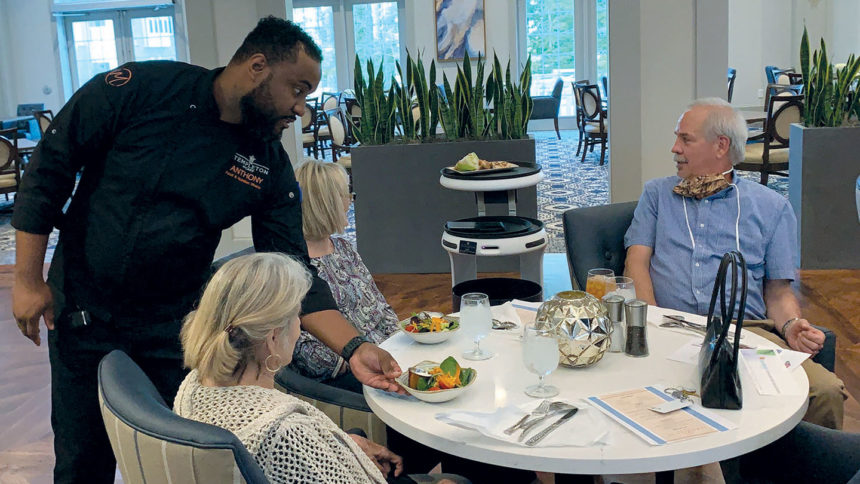
Amid the third year of the COVID-19 pandemic, technology continues to help senior living providers connect to and strengthen their workforces, deliver a better experience for residents and positively affect the bottom line. That is especially the case in two critical areas: staffing and dining.
“The No. 1 pain point for aging services providers this year is workforce shortages, so the potential for technology to help mitigate that is definitely bubbling to the top in terms of priorities,” said Majd Alwan, PhD, senior vice president of technology and business strategy for LeadingAge and executive director of the LeadingAge Center for Aging Services Technologies.
Operators must take a comprehensive look at the ways that different technology applications can help alleviate workforce challenges, Alwan said.
Several senior living communities, for example, have embraced the use of Bear Robotics’ Servi robots, three-tiered food runners that make trips to and from the kitchen to deliver food and bus tables, allowing employees to remain in the dining area with residents.
Earlier this year, Fort Myers, FL, life plan community Cypress Cove expanded to using three of the Servi bots to support its largest formal culinary venue. Through a combination of robots and process changes, the community was able to increase table responsibilities from four to six tables per server, according to Joe Velderman, vice president of innovation at Cypress Living.
“Staff are having to make far fewer trips between their section and the kitchen and are staying in their section to be more responsive and supportive of our residents,” he said.
Also, the community now requires fewer servers than it did pre-pandemic and has been able to reduce its dependency on front-of-house culinary staff by 330 hours per week. Those savings were reinvested in the community’s workers, with almost all front-of-house culinary positions receiving a 40% to 50% pay increase.
“We’re starting to see this high wage attract more experienced talent from people who maybe don’t want to work in the restaurant industry anymore and instead want to experience the benefits of working in senior living, including better hours, benefits and culture,” Velderman said.


